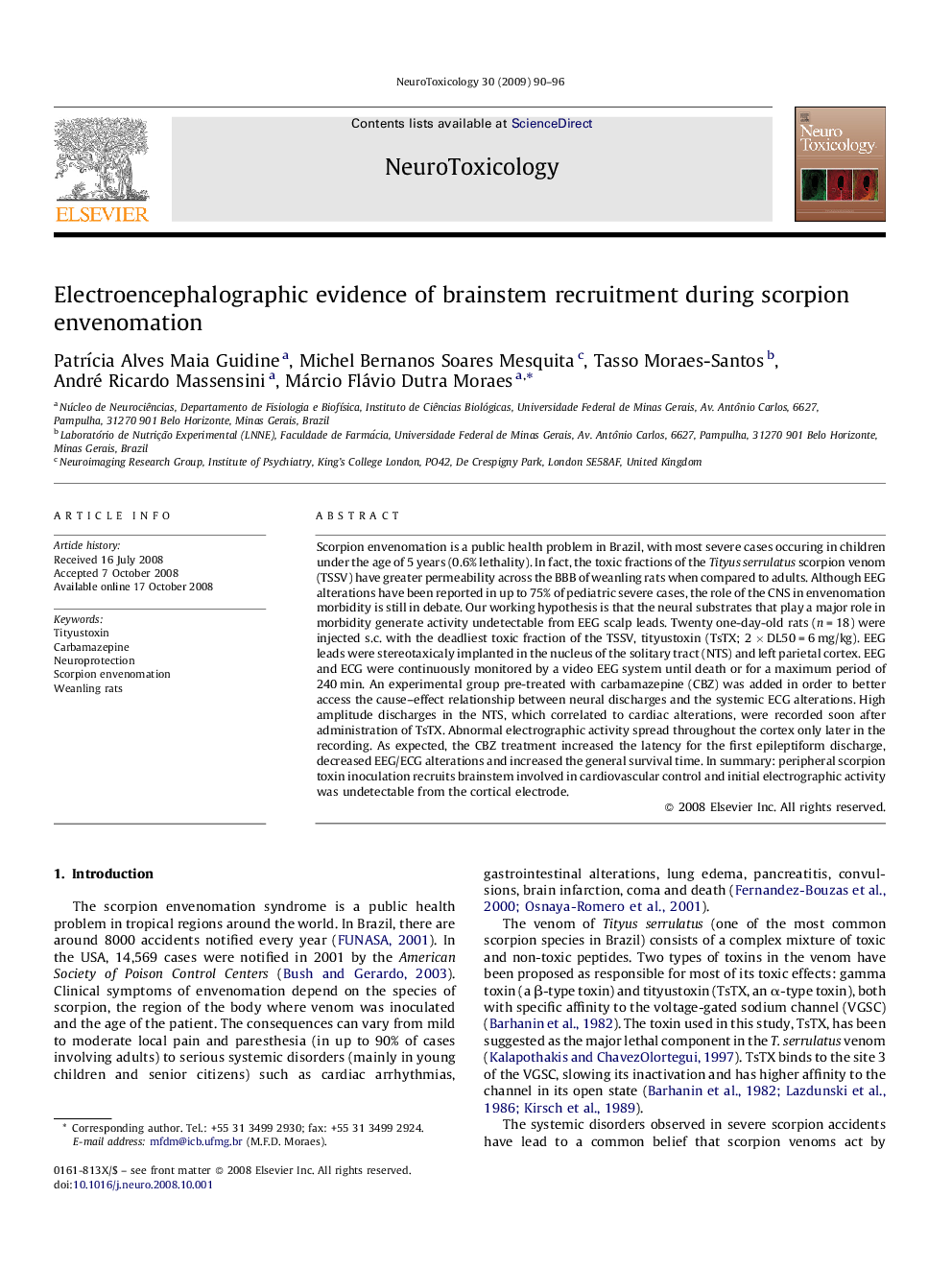| Article ID | Journal | Published Year | Pages | File Type |
|---|---|---|---|---|
| 2590190 | NeuroToxicology | 2009 | 7 Pages |
Scorpion envenomation is a public health problem in Brazil, with most severe cases occuring in children under the age of 5 years (0.6% lethality). In fact, the toxic fractions of the Tityus serrulatus scorpion venom (TSSV) have greater permeability across the BBB of weanling rats when compared to adults. Although EEG alterations have been reported in up to 75% of pediatric severe cases, the role of the CNS in envenomation morbidity is still in debate. Our working hypothesis is that the neural substrates that play a major role in morbidity generate activity undetectable from EEG scalp leads. Twenty one-day-old rats (n = 18) were injected s.c. with the deadliest toxic fraction of the TSSV, tityustoxin (TsTX; 2 × DL50 = 6 mg/kg). EEG leads were stereotaxicaly implanted in the nucleus of the solitary tract (NTS) and left parietal cortex. EEG and ECG were continuously monitored by a video EEG system until death or for a maximum period of 240 min. An experimental group pre-treated with carbamazepine (CBZ) was added in order to better access the cause–effect relationship between neural discharges and the systemic ECG alterations. High amplitude discharges in the NTS, which correlated to cardiac alterations, were recorded soon after administration of TsTX. Abnormal electrographic activity spread throughout the cortex only later in the recording. As expected, the CBZ treatment increased the latency for the first epileptiform discharge, decreased EEG/ECG alterations and increased the general survival time. In summary: peripheral scorpion toxin inoculation recruits brainstem involved in cardiovascular control and initial electrographic activity was undetectable from the cortical electrode.
